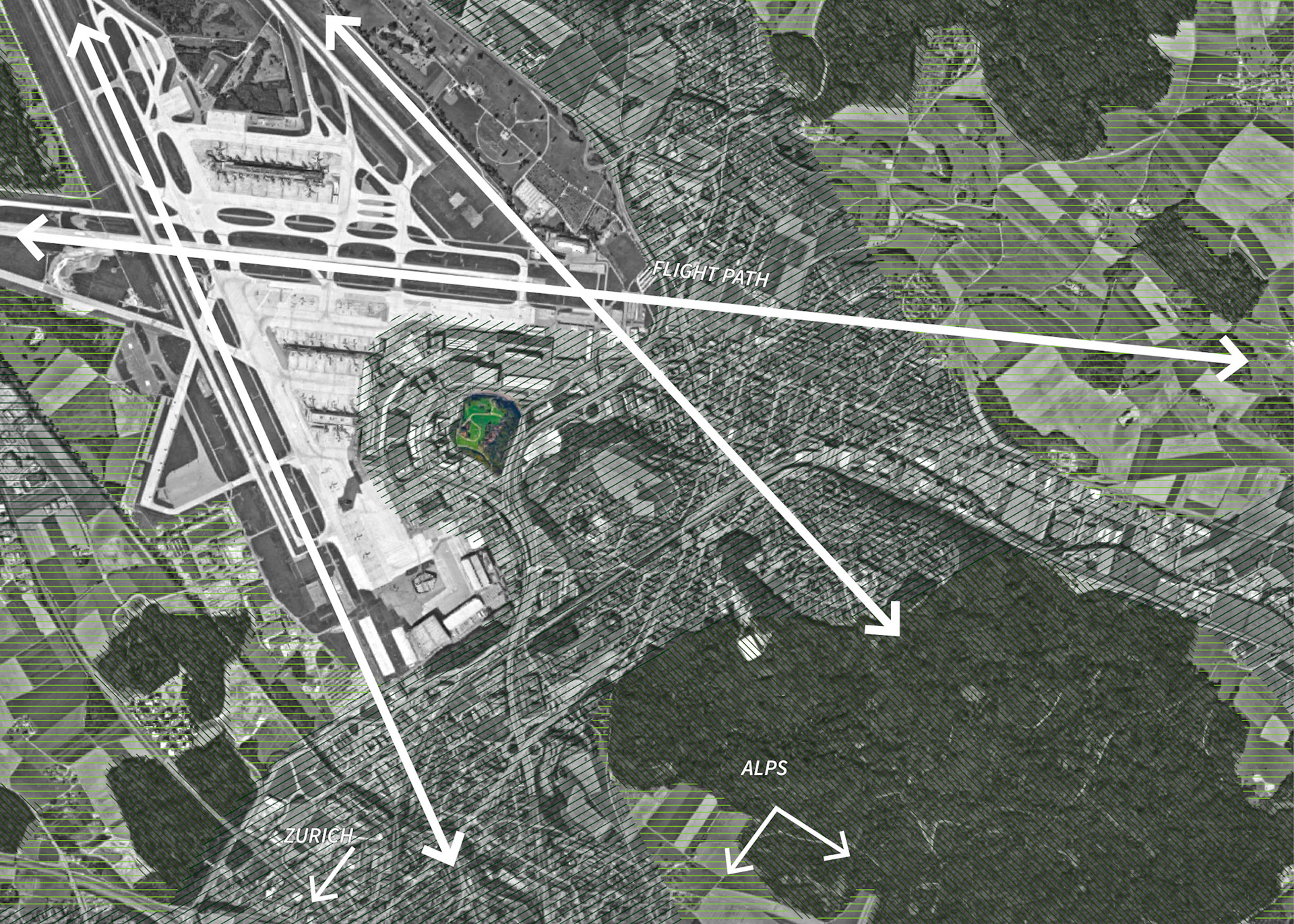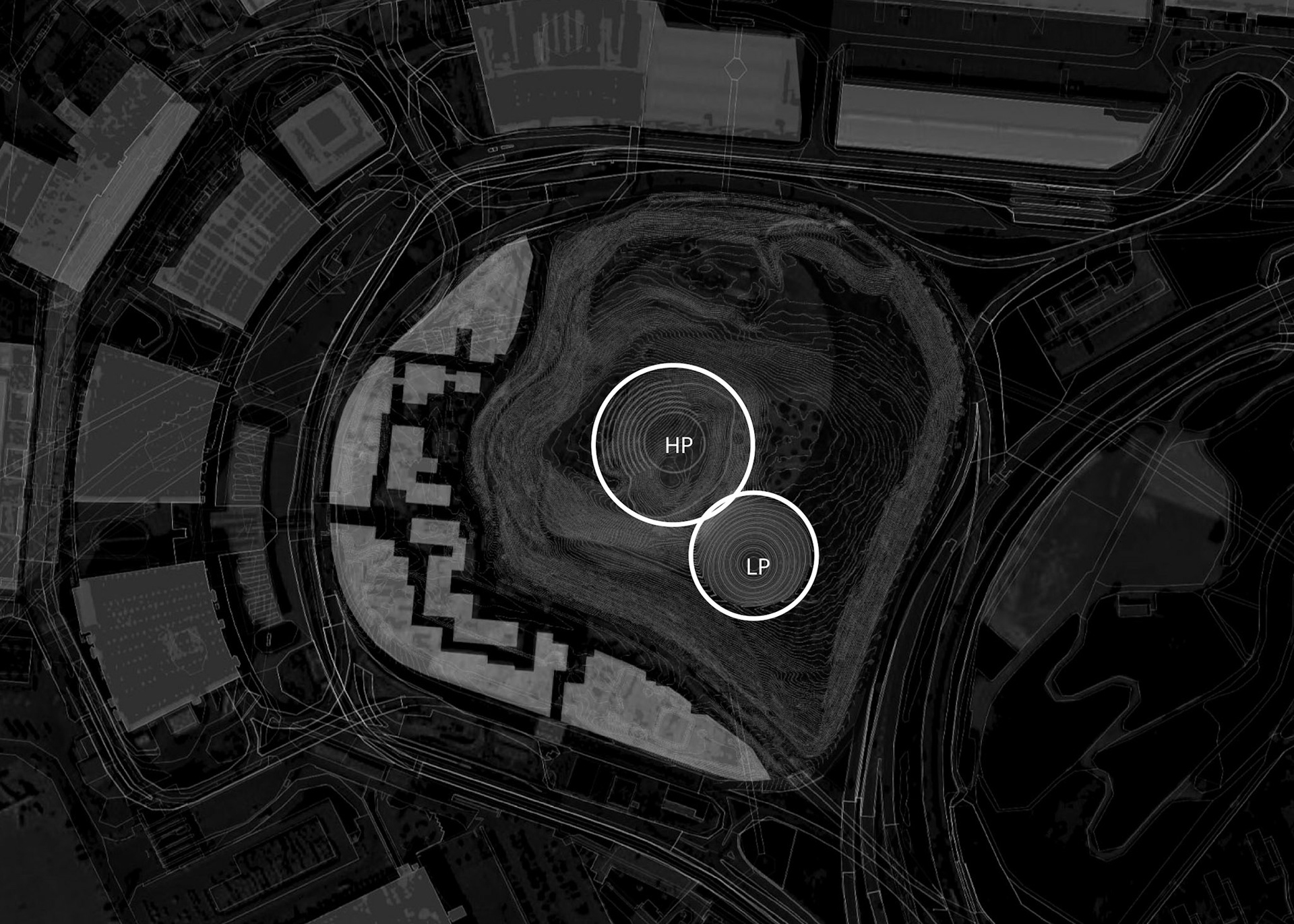Option Studio | In Search of Geographical Re-Enchantment:
Landscape Interventions Between Atmosphere, Function + Experience
Robin Winogrond, Zurich, Switzerland (remotely)
Fall 2020
The Site: On the urban edge of Zurich, the site is a newly constructed park next to the Zurich Airport and encircled by the enormous, new multi-use complex, The Circle, designed by Riken Yamamoto. The park is intended to establish itself as a place of nature, reflection and relaxation spanned between highways, airport infrastructure and the Circle complex. It represents a new form of global, yet local urban nature, of landscape and built interventions, to be used daily by tens of thousands of airport employees, visitors and local residents.
The central hill consists today of historical layers of natural and artificial landscapes. In the 1970s, the excavation of the highway was thrown on top of the archaic, swiss glacier moraine, forming a strange yet fascinating artificial topography.*
*Adapted from the studio brief
Inverting The Circle
Proposal: To carve a crater from the base of the site’s central hill. This single gesture will re-enchant the park by reorienting the viewer, subverting the experience of climbing towards the parks central summit, and by exaggerating the impact of this peak through the creation of an inverse counterpoint.

Site Context

Site Analysis

Gesture Sketch
The circle is beneath air traffic and circumscribed by car traffic, a patch of green surrounded, both visually and aurally by transportation infrastructure.
Topographically, the site is defined by steep peripheral edges and a singular mound-like hill.
Plan
The crater is sited to intersect the dense wood, open wood, meadow, and the iconic tree ring. Simultaneously, it straddles steep and level terrain and is the center point between four paths.
The intervention is functional as a recreational space while also destabilizing the user experience by defying expectations on a massive scale.
Perspective rendering
Sun studies reveal that the crater benefits from significant sun exposure in the later part of the day, while still providing opportunities to seek shade throughout.
While a perfect circle in plan, the interior contours are off center. This was done to take advantage of alpine views and manipulate the auditory experience within.
The concavity of the crater functions as an inverse berm, blocking the sounds of the highway from the its interior.
The shape and orientation of the crater amplifies the sound of airplanes and reflects it towards the high point of the crater, where the slope also encourages users to recline and observe the sky.


